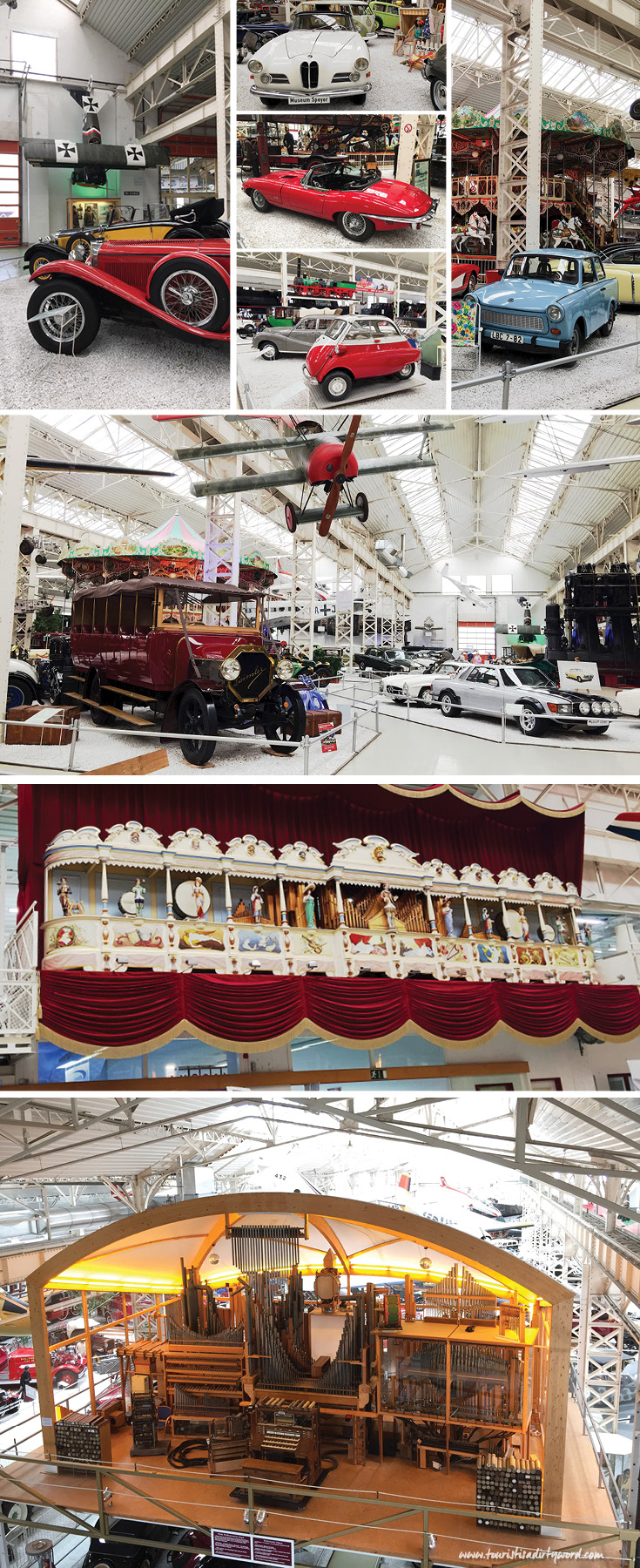Disclosure: Please note that some links are affiliate links, and at no additional cost to you, we earn a commission if you make a purchase.
If you would like to support this website in some way, using these links will help do exactly that.
In the eleven years we’ve been together, I’ve personally flown with Sebastian on twelve vacations to Germany. We’ve been fortunate that our hard work has rewarded us so well. Although I’m not fond of flying for eight to nine hours over the ocean, I’ve always been able to ‘get through it’ because Sebastian was by my side. This year’s trip was unique in that Sebastian flew two weeks before I did, so I needed to fly solo.
What?!
Yup. Alone.
While all sorts of morbid, paranoid dust storms kicked up in my imagination, I tried to talk myself out of my irrational fears. Sebastian’s sister who is my age flies by herself all the time. Heck, I flew by myself to Australia when I was 15. But, that was before I grew up and knew enough to be afraid, that was before 9/11.
Sebastian knows me well enough to know how to outsmart my fears, and my paranoias. When he booked my flight from Florida to Germany, for the first time ever he upgraded my seat to Lufthansa’s Premium Economy. He flipped my ‘situation’ upside down, and tried to give me something to look forward to instead of dread.
It helped, and my curiosity battled it out with my fear. Sebastian himself has never flown Premium Economy, so I made sure I took notes of the differences and took pictures. I hope this post will provide some insight if you’re on the fence about upgrading, whether it be for anxiety-related reasons like mine, or just for more personal space.
Welcome to Your Lufthansa Premium Economy Bubble
Right away, you notice the upgraded finishes and larger armrest. There’s leather/pleather accents where in Economy there’s plastic. The arm rest is wider, and seemingly longer with it's slightly recessed cup rest at the end. In Lufthansa’s Premium Economy the seats recline further, warranting the need for the pull out tray to come from the arm rest instead of the seat in front of you. This took me and my neighbor some getting used to and mutual coordination, but it was much more comfortable than in Economy where I felt I had to lean forward to eat over the tray. Storage for your carry-on luggage above and below seems about the same as economy. Storage below the seat in front of you can be tricky with the the added foot rest, but the foot rest is definitely worth the trouble. I'm 5'5" with short legs, and it was comfortable for me, and I used it. If you have long legs, it might be a nuisance.
Also because the seats recline further in Lufthansa Premium Economy, there’s a need for a remote. Although I had movies on my phone, I used the on-board entertainment. The screen is noticeably larger and nicer than what I’ve had in Economy in the past. There’s a corded remote also on the arm rest, right next to where an additional side strap holds your complimentary ammenity bag. I noticed the headrest will go a bit higher if you’re taller and need a few more inches. Between the seat reclining further, the extra armrest space, and the foot rest, I slept three hours, my best yet.
Additional Customer Service in Lufthansa Premium Economy
I was startled when the flight attendant asked if I’d like an orange and mango juice while the plane was still in the boarding process. He also helped my neighbor with her carry on luggage by lifting it up to the overhead compartment. With Lufthansa’s Premium Economy, you’re allowed a 2nd checked bag, so I had checked my rolling carry on bag. There’s a regular-sized bottle of water waiting for you when you board, so no need to find and purchase one after getting through security at the airport. You also receive a traveler’s amenity bag, which I mentioned earlier is tucked into your arm rest. At the time I flew, it was a Picard® pouch, and inside were a generic pair of warm, tall socks, an eye mask with Lufthansa logo, toothbrush and toothpaste, and packaged cleansing towelette.
Boarding Process
My only complaint with Lufthansa Premium Economy is that the boarding order is last. First on is the Handicapped, then Families with 6-year-olds and younger, next is Business Class, followed with Economy Rows 29-46, and then finally Premium Economy. The Premium Economy is such a small section of the plane, probably consisting of 25 passengers in total, that it really seemed odd to make us board last. With the extra checked bag allowance, I noticed I wasn’t the only one that checked a rolling carry on, so our boarding would have been incredibly fast. Especially given that a juice drink is served during boarding, why seat us last? It felt like a mistake.
Was Flying Lufthansa Premium Economy Worth It?
Yes, definitely. For the additional hour or two of comfortable sleep and personal space it was worth it. If you’re planning on working on a laptop, the pull out tray from the arm rest is perfect, and there’s enough space between the tray and the back of the seat in front of you that you can have your laptop screen upright. If it's a stretch financially, I’d recommend upgrading the flight only on your way to Germany, since that’s when you want to sleep, and then fly back to the States in regular Economy. Have you tried Lufthansa Premium Economy? What did you think?
If Premium Economy isn't an option for you right now, and you're looking for tips on how to sleep on the long-haul flight, we wrote about that previously here. For Sebastian especially, getting noise-cancelling headphones was a big game changer. He was able to sleep for 5 hours and was so happy he wrote a whole product review for them. With the holiday season soon upon us, that might be a great gift idea for your own wish list or for the traveler in your life.
Follow Along
If you enjoyed this article, or these topics sound interesting to you, you'll love our weekly newsletter. You'll receive the newest posts each week and exclusive access to free planning resources like ‘Packing List & Tips for 2 Weeks in Germany’ and ‘Everything You Need to Rent a Car in Germany’.
Thank you for reading!
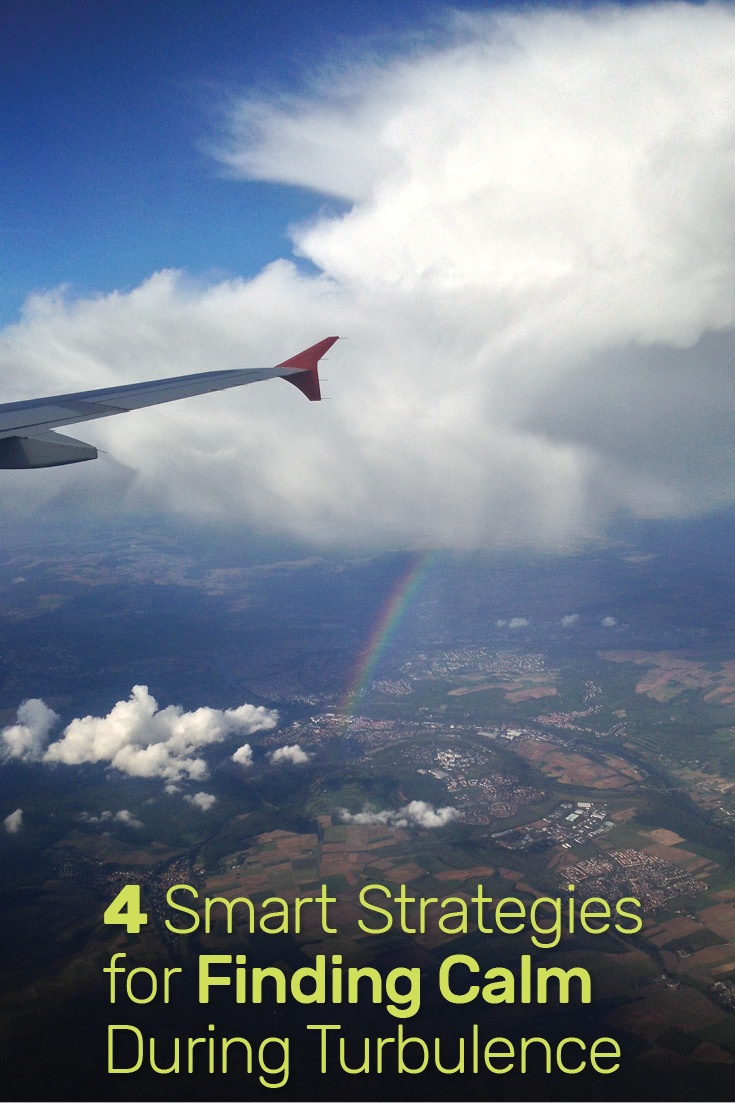
The plane jostles and shakes, as if we’re riding a bucking bronco in a rodeo. The overhead, ever-so-polite DING sounds to indicate the fasten our seat belts icon has illuminated again. Barely a moment passes before the airplane’s intercom crackles to life, suspending all of the in-flight movies. First in German, and then in English, we’re informed of turbulence. Yup. Kind of hoping that’s all it is. Sebastian squeezes my hand, and I squeeze his back. I take a deep breath. It's time to break out one of my tools for mentally getting through the heart stopping moments of turbulence when my imagination wants to concentrate on every single horrible, tragic ending to my situation.
1. Mental Images: Good Imagination For Peace of Mind
A therapist from college taught me how, and it's the closest I’ve ever felt to being a jedi. First you imagine white light. Starting from inside you, you envision the light, and concentrate on expanding it, pushing it out as if you’re in a bubble of white light. Personally, I take this a step further and imagine a polar bear, my favorite animal, something that brings me peace and a spark of joy. For you, it's probably a different animal, or a person, or a good memory, or a place. Famously, in my favorite movie French Kiss, Meg Ryan’s character Kate has a little cottage she’s supposed to imagine. Or if you’re a Harry Potter fan, think of the Expecto Patronum spell, what’s your Patronus?
2. Bottle Up Your Happy Place
When you start to panic during turbulence, break out your good smells. If you have a calming essential oil you like, a book that’s sporting the new book smell, or a sweatshirt that smells like home, get it out, close your eyes, and breathe it in. Let your nose fool you into believing you’re anywhere else but on a plane.
Smell is our only sense that projects directly
to the amygdala, a center connected with emotion and memory. Using smells during emotionally heightened episodes, like turbulence on a plane, can retrieve pleasant memories more powerfully than other senses.
3. Tick Tock, Tick Tock
Hyperventilating? Being told to take a deep breath isn’t very helpful is it? Something that helps me find my rhythm is a ticking clock. Look into downloading a sound or nature app on your phone. Most of them have an old fashioned clock and more. I’ve seen one that has a cat purring sound. Anything that is regular and a soothing sound can help regulating your breaths or heart rate. Yes, the next time the plane lurches suddenly you'll have to start over again, but it gets easier.
4. Give Yourself Something to Look Forward To
Notoriously, the flight back from German to the U.S. is worse as far as turbulence goes, with the plane fighting against the wind and jet streams the whole time. Once, personally I experienced turbulence over the Atlantic that dragged on for hours. You may need a long-term plan. Save the next few episodes of a TV show you’re currently loving to binge watch during the turbulence. Similarly, get hooked on a new book a few days before your departure date so you can’t wait to jump back in again. Don’t buy a new book that you may or may not get into, take one whose world you’re already distracted and enthralled with.
What has gotten you through seemingly never-ending turbulence?
Follow Along
If you enjoyed this article, or these topics sound interesting to you, you'll love our weekly newsletter. You'll receive a free Germany Packing list for signing up, and you'll receive each week's newest posts every Friday. Thank you for reading!

Being afraid of heights is not very helpful when you try to climb into a Boeing 747 airplane mounted on a 65 foot high pedestal. It gets even worse, when the plane is slightly tilted to the right at the rear, forcing you to bend to the left walking forward. It takes a while to get used to this feeling, but I am glad I overcame my fear of heights, since this Lufthansa plane was one of the highlights for me at the Technik Museum in Speyer.
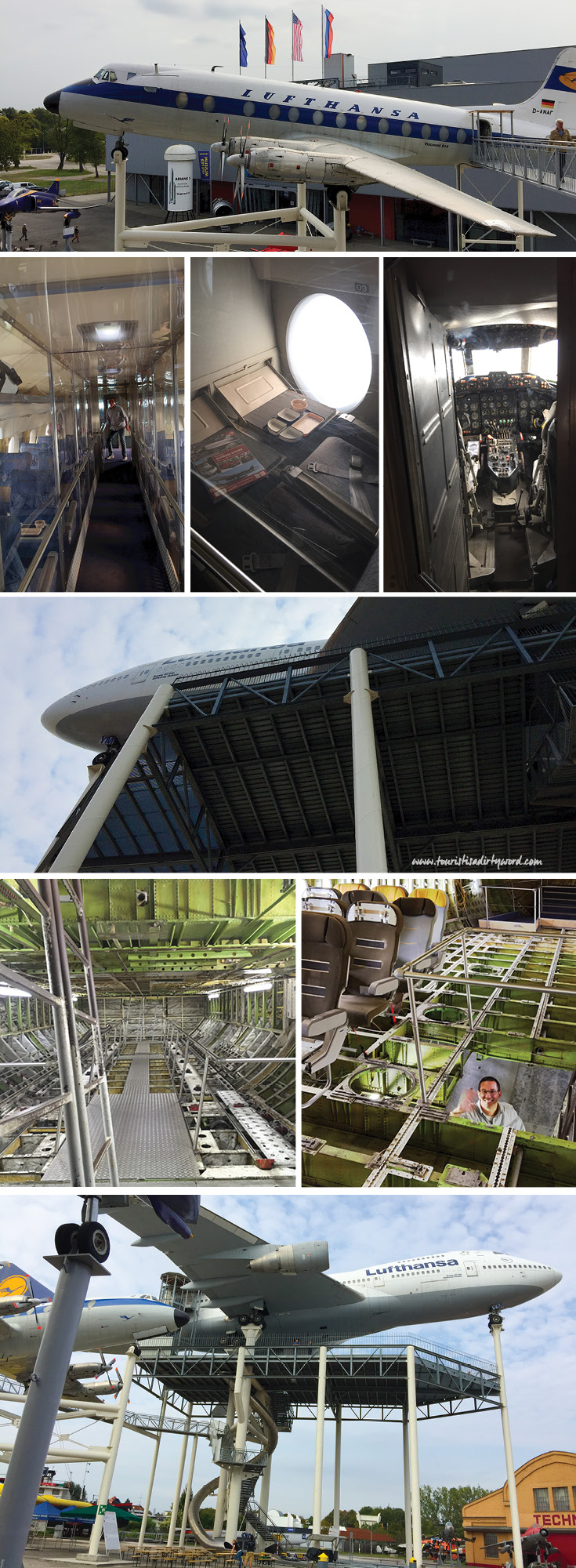
Besides the Boeing airplane, here are some other key figures why a visit to this museum is a must, when you are near Speyer:
We arrived by car and saw the large, stationary airplane from the nearby interstate already. Even without a navigation system, you will not be able to miss this museum. The museum has a very large parking lot, which leads you right to the entrance. The entrance fee was 16 Euros per person, which is certainly at the high-price end for a museum, but totally worth it.
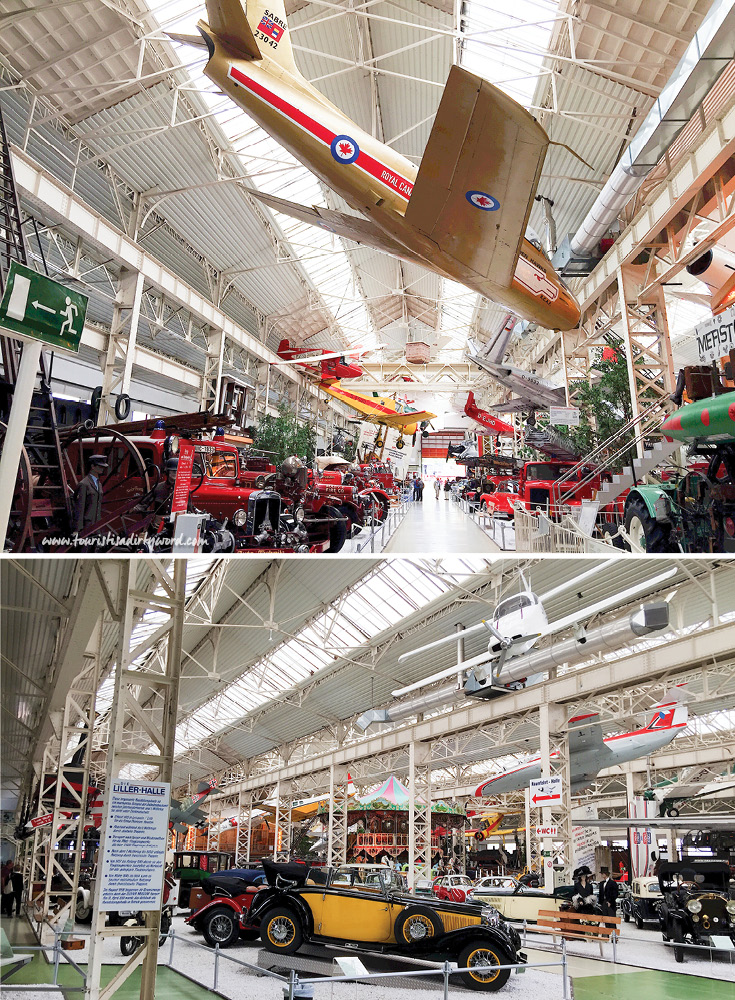
Functioning Carousel from 1850s
Once you scan your ticket, you enter a huge hall called “Liller Halle”, a factory building from 1913. Looking around you are surrounded by motorcycles, cars, fire engines, planes and in the center you will find a large carousel. Drop in a two Euro coin, wait 30 seconds for the warmup and the carousel lights up and plays a song on the organ while turning. Impressive how tall it is and how fast it turns. It was used until 2002 and is over 150 years old, but in pristine condition. You could set it in the middle of any fair right now and would make money hand over foot.
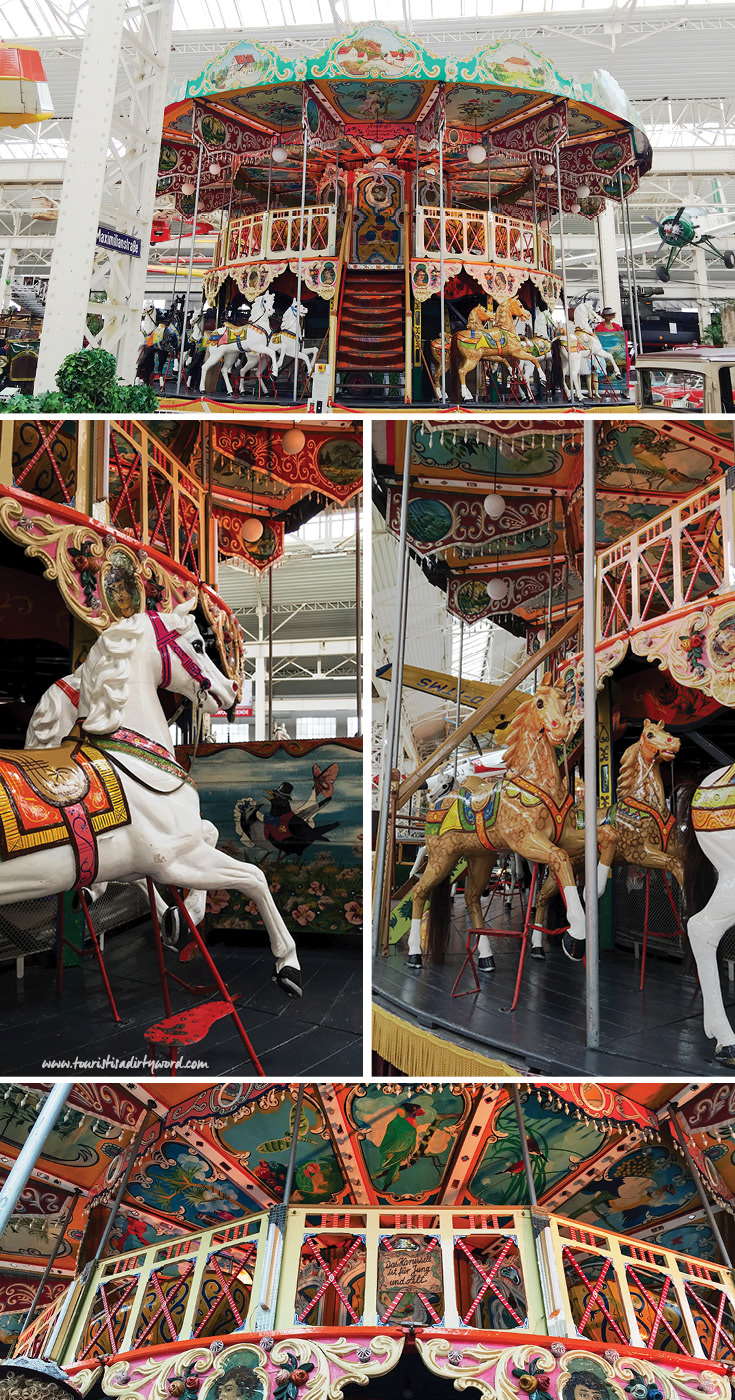
Boeing 747
Step outside and you walk towards a large steel scaffold leading up to the Boeing 747 airplane. Even if you are afraid of heights, this is an absolute must to check out. To this day, the Boeing 747 is the only aircraft of this kind which was dismantled and then transported to a place outside from an airport to be reassembled again. Inside you can even access the cargo space and stand on the left wing of the plane. I opted not to do that, since I felt that being up there and walking through the tilted plane was enough excitement for me. Before you head up to the plane, make sure to grab one of the carpets downstairs, which you can use to slide down the chute instead of walking back down again.
BURAN Orbiter
After getting a feel for heights, you enter the space hall with another highlight, the BURAN orbiter, which was the Russian counterpart of the NASA Space Shuttle. Outside of Russia and the United States, the BURAN in Speyer is the only space shuttle which can be visited in a museum. The BURAN was built in 1984 and was used to test gliding and landing after re-entry into the earth's atmosphere. The shown model has completed 25 atmospheric flights and does look a bit damaged and worn.
Just around the corner of the Boeing 747 is an Antonov AN-22, the largest propeller driven aircraft. Mounted much lower to the ground, it gives you a great impression of the size of the cargo bay. Small screens and mounted text panels give you more information what all this plane can load and transport. The AN-22 was designed as a civilian and military transport aircraft that could carry loads of up to 100 tons even in rough regions without a fixed runway. This plane could hold three fully loaded gravel trucks and take off without a problem.
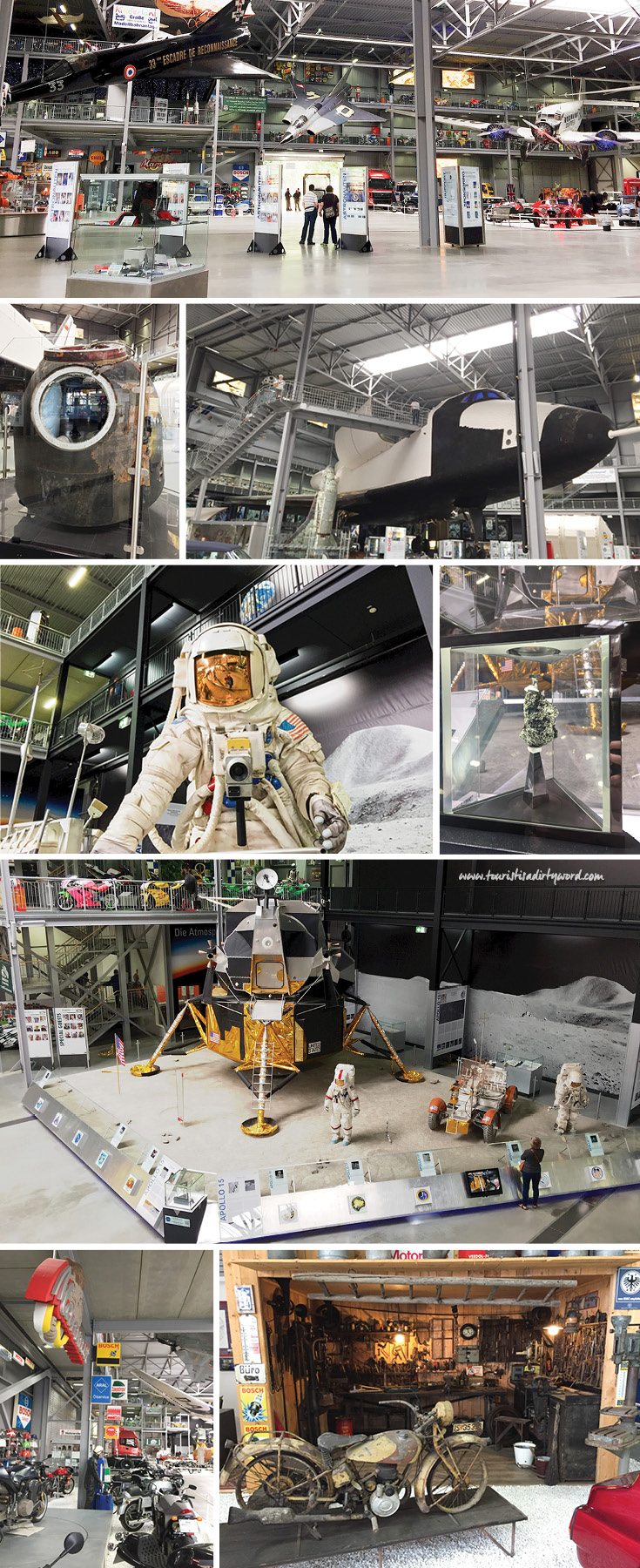
Rescue Ship Essberger
We ended our visit by climbing onto the rescue ship “John T. Essberger” of the German Maritime Search and Rescue Service. It was built in 1975 and has three engines with a combined power of 7200 hp for a top speed of almost 30 miles per hour. You can walk around the whole outside of the ship and also see many interior rooms including hospital rooms and private quarters. In case of a rescue this ship could have taken on up to 300 shipwrecked passengers in addition to the crew of 13.
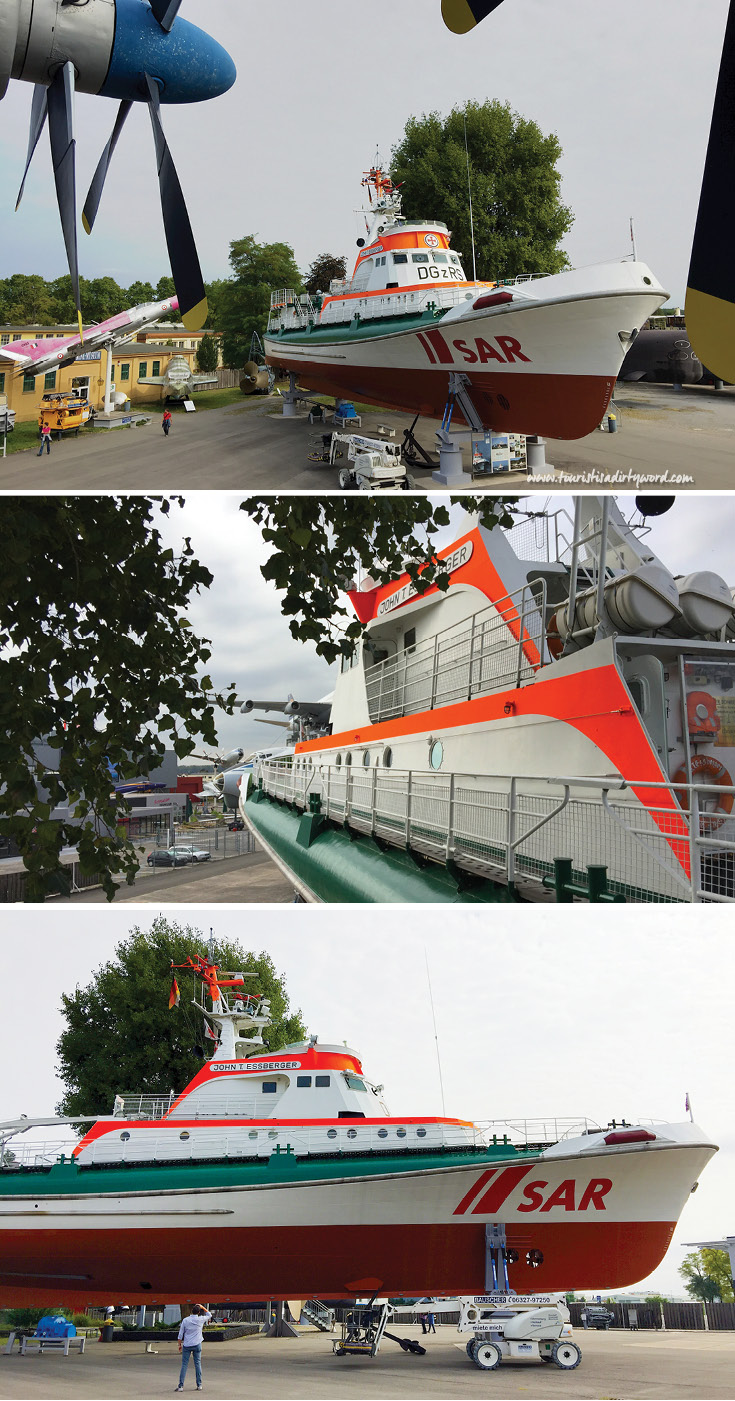
Follow Along
If you enjoyed this article, or these topics sound interesting to you, you'll love our weekly newsletter. You'll receive a free Germany Packing list for signing up, and you'll receive each week's newest posts every Friday. Thank you for reading!

